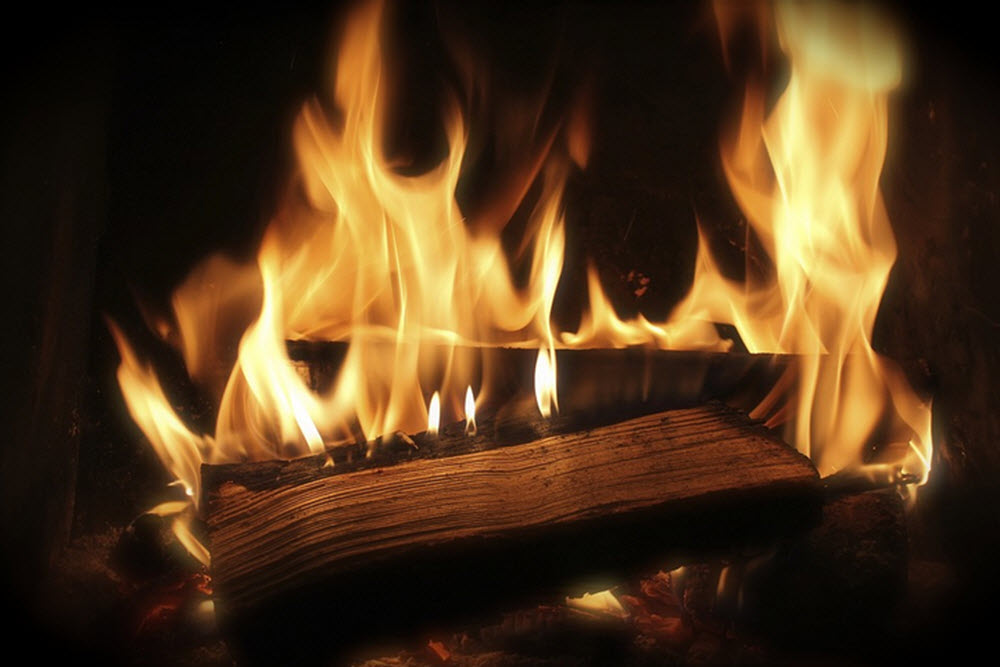Before the Industrial Revolution, firewood was the main hydrocarbon fuel in most parts of the world.
Firewood is a renewable fuel source, but there are many regions where the current demand for firewood is outpacing the regrowth. Improvements in how firewood is used (e.g. more efficient stoves) can have a major impact on the local level.
Dried wood
Firewood can be categorized in various ways, e.g. by size, hardwood vs. softwood, and seasoned (dried) vs. unseasoned (not dried). When firewood is to be stored and dried rather than used soon after collection, it is common practice to split it first. This exposes the inside of the wood to the air and allows for quicker drying (also known as seasoning). Several types of axes have been developed for firewood splitting. In some parts of the world, using a machete is more common. A kinetic log splitter is a more complex (and motor-powered) device that relies on a rack and pinion system combined with a large flywheel.

Heating value
The heating value of firewood will vary depending on various factors, including wood species and moisture content. The moisture content has a big impact on how the wood burns and how it releases heat. The higher the moisture content, the more energy will be used to evaporate the water before the wood can burn. Therefore, dry wood provides us with more heating than wet wood.
It is not unusual for green wood (wood that has not been dried, i.e. not seasoned) to weigh 70% – 100% more than seasoned wood of the same kind. Generally speaking, wood will be considered dry (seasoned) when the moisture content has fallen below twenty percent.
Examples of energy content for four different types of wood
- White Fir. Heat value: Circa 5 GJ per cubic metre.
- Red Fir. Heat value: Circa 6 GJ per cubic metre.
- Birch. Heat value: Circa 6.2 GJ per cubic metre.
- Red larch. Heat value: Circa 6.5 GJ per cubic metre.
Combustion by-products
Smoke
When wood is burned, it will produce a smoke that contains water vapour, carbon dioxide, various aerosol particles, and more. The exact content will vary depending on what you burn and how you burn it. A lack of oxygen can for instance promote the formation of carbon-monoxide instead of carbon-dioxide.
Certain fine particles contained within wood fire smoke can be detrimental to human health, especially if concentrations are high in the air, e.g. when a lot of households in a city are relying on firewood to heat their homes during winter.
Slow combustion stoves for firewood increased the efficiency for heaters, but also increases particulate production. Fortunately, certain methods can be utilized to produce useful biochemical by-products instead of releasing the compounds into the air we breathe.
In some highly efficient burners, the temperature of the smoke will rise to a point where the smoke itself will burn. (As an example, 609 degrees C is required to ignite carbon-monoxide gas.) This reduces smoke hazards, while also providing the heater with more energy. Important: Catalytic converters can be used to lower the required temperature for obtaining cleaner smoke.
Wood ash
The wood ash remaining after a wood fire can be used a soil fertilizer, as it contains plenty of potash. Important: Wood ash is alkaline, because it contains potassium hydroxide (lye). This should be taken into account when using it as a fertilizer, since some plants do not do well in alkaline soil. Traditionally, lye was extracted from wood ash, and wood ash was also used to make soaps.

